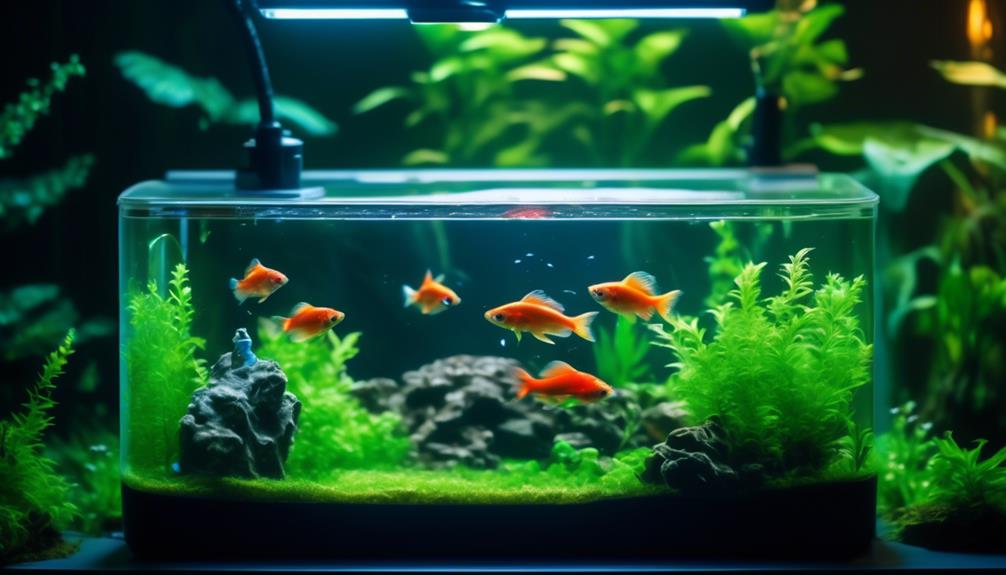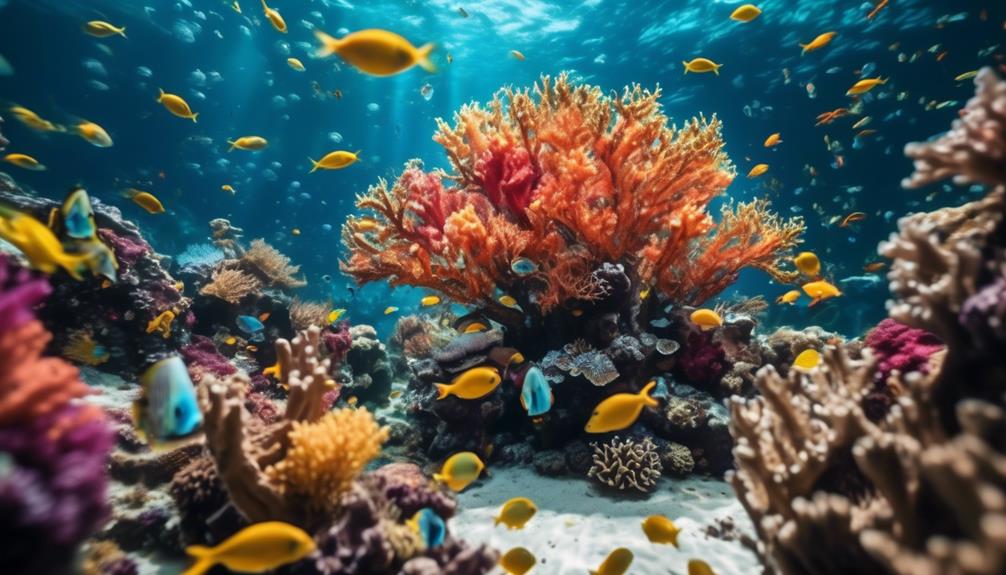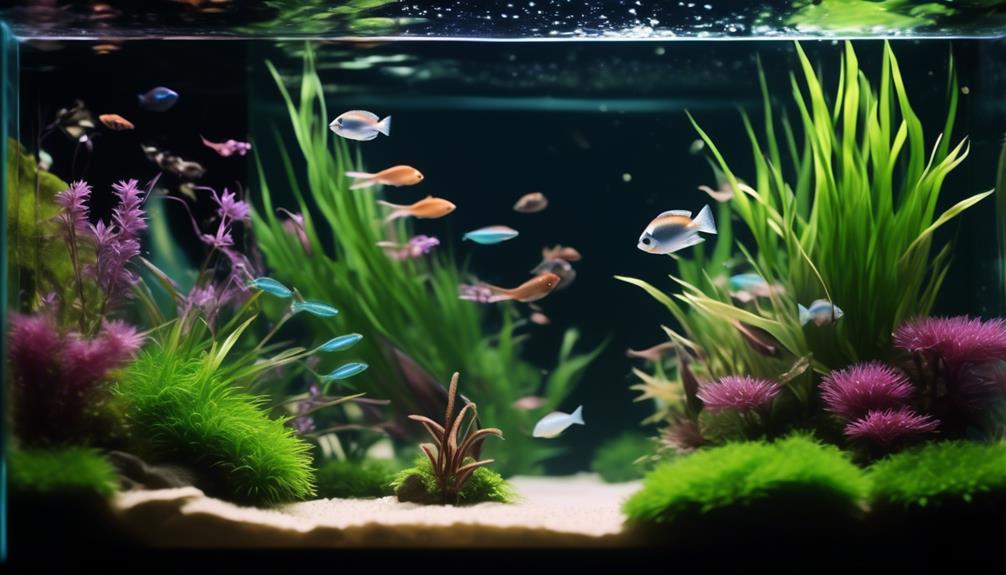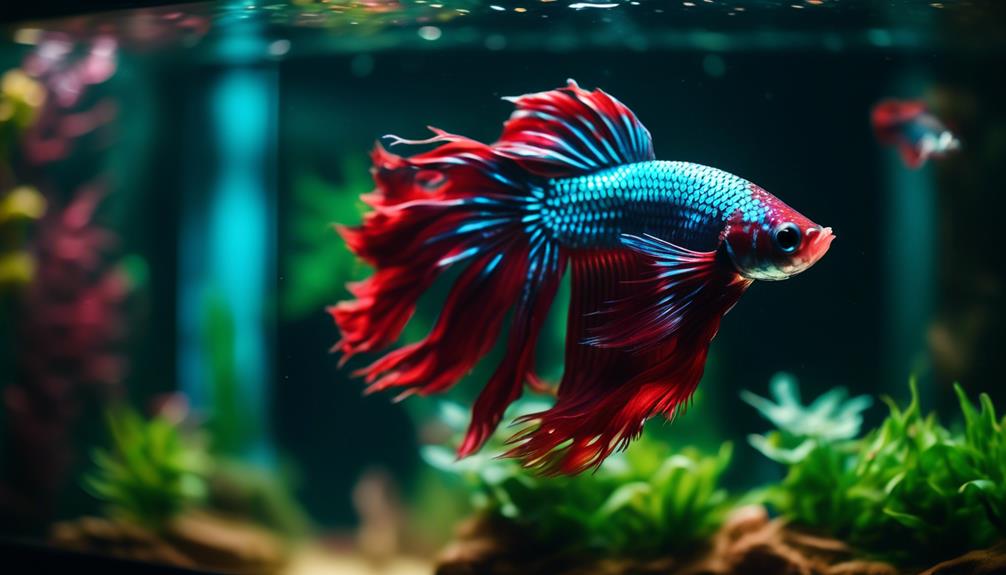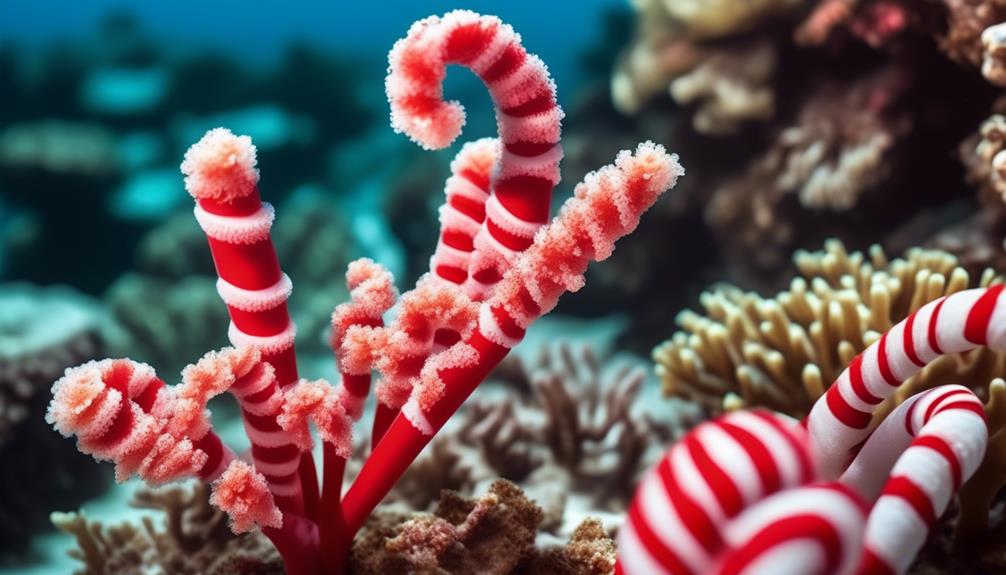Maintaining a disease-free fish tank is a crucial aspect of responsible aquarium ownership. The health and well-being of the fish rely heavily on a clean and sanitized environment. However, achieving a disease-free tank requires more than just regular cleaning. It demands a comprehensive understanding of the necessary steps and preventive measures.
In this discussion, we will explore expert tips and strategies to ensure a disease-free fish tank. From the importance of proper sanitization to the significance of treating the fish before cleaning, we will delve into the essential aspects of creating a safe and healthy habitat for your aquatic companions.
So, let's dive in and unlock the secrets to a disease-free fish tank.
Key Takeaways
- Regularly sanitize the fish tank to provide a clean and hygienic environment for the fish and prevent the spread of diseases.
- Properly clean and disinfect all accessories, decorations, and equipment to remove any traces of bacteria or parasites.
- Quarantine new fish before introducing them to the main tank to prevent the introduction of diseases.
- Seek professional help for tank sanitization if unsure or unable to perform the task effectively.
Importance of Sanitizing a Fish Tank
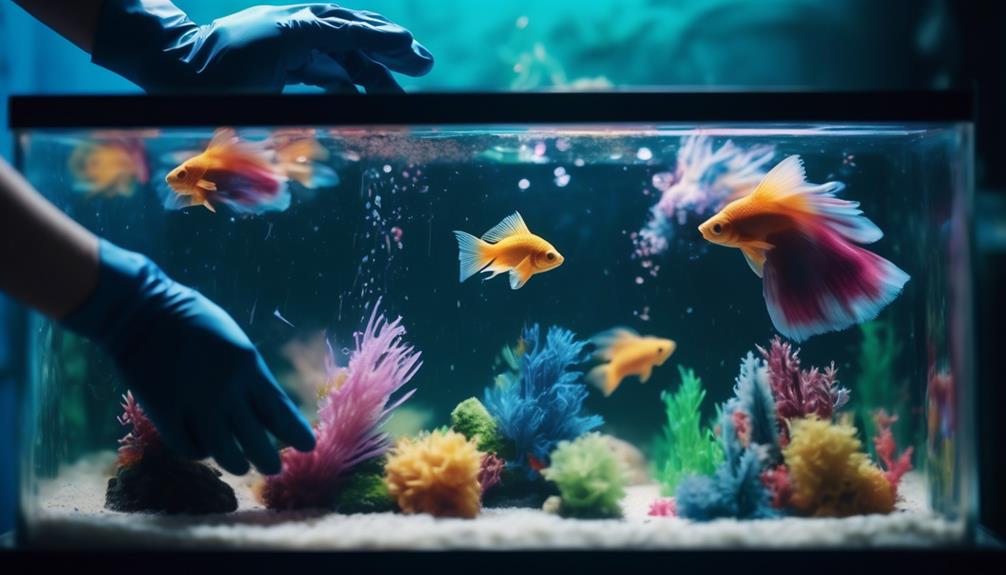
Sanitizing a fish tank is of utmost importance for maintaining the health and well-being of the fish and preventing the spread of diseases. Regular maintenance of a fish tank provides numerous benefits, including a clean and hygienic environment for the fish, protection of their eggs and lives, prevention of disease relapses, and improvement of the overall appearance of the tank.
Common diseases in aquarium fish can be prevented through proper sanitization. This involves removing the fish from the tank and placing them in a quarantine tank, cleaning and disinfecting all items removed from the tank, using natural disinfectants like white vinegar or diluted chlorine bleach, and ensuring the tank is free of chlorine before reintroducing the fish.
Additionally, preventive measures such as regular cleaning, maintaining a well-functioning filter, quarantining new fish, providing a healthy diet, and treating fish before sanitization can help maintain a disease-free aquarium. Seeking professional help for tank sanitization can also ensure thorough cleaning and reduce the risk of incomplete sanitization.
Steps to Sanitize a Fish Tank
Regular maintenance and proper sanitization are crucial for ensuring the health and well-being of the fish in a tank. This can be achieved by following a series of precise steps.
- Start by removing the fish from the tank and placing them in a quarantine tank to protect them during the sanitization process.
- Take out all ornaments, plants, substrate, filter, pumps, and thermometer from the tank.
- Drain the water and clean and disinfect all items removed from the tank. Rinse everything thoroughly before putting them back in the tank.
- Use natural disinfectants like white vinegar or diluted chlorine bleach to sanitize the tank. Scrub the walls, decorations, filter, lights, and roof of the tank. Rinse everything multiple times to remove any traces of bleach.
- Consider replacing the substrate if it cannot be effectively cleaned.
- Before reintroducing the fish, ensure the tank is free of chlorine by using an aquarium conditioner.
- Consider getting a new filter to prevent reinfection.
- Allow the tank to go through the nitrogen cycle or use beneficial bacteria to speed up the process.
- Add fish medicine to prevent another disease outbreak.
- Monitor the water for any signs of disease before reintroducing the fish.
Sanitizing a fish tank using natural disinfectants and following these steps can help maintain a healthy and disease-free environment for the fish.
However, if unsure or unable to perform the task, it is beneficial to seek professional help for tank cleaning. Professional aquarium cleaners have the knowledge and experience to effectively sanitize fish tanks, ensuring thorough cleaning and reducing the risk of incomplete sanitization.
Regular maintenance and cleaning by professionals can prevent disease outbreaks and maintain a healthy tank environment.
Preventive Measures for a Disease-Free Aquarium
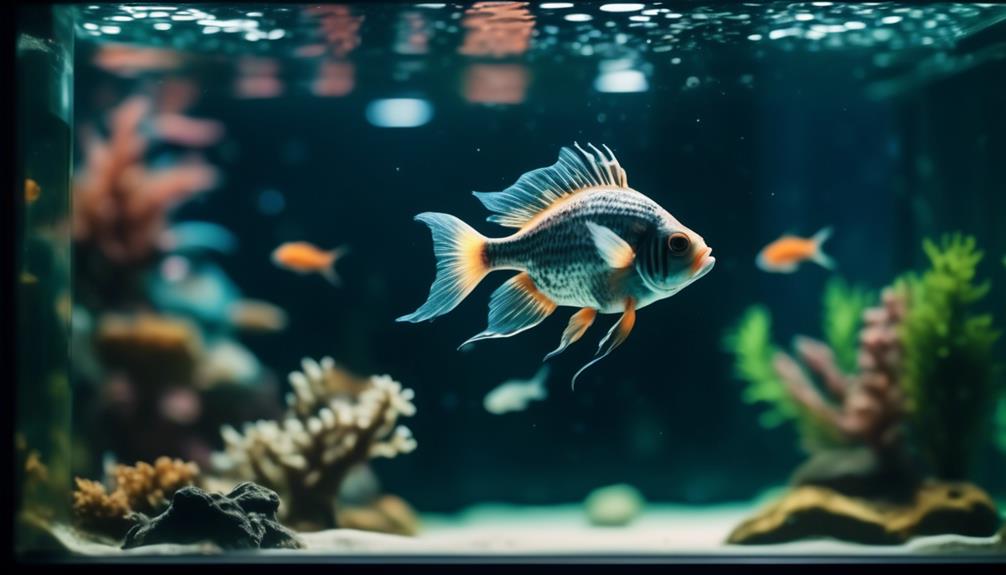
Implementing preventive measures is essential for maintaining a disease-free aquarium and ensuring the overall health and well-being of the fish. Two key measures to consider are regular water changes and choosing the right fish species for your tank. Regular water changes help maintain water quality by removing pollutants, excess nutrients, and waste products that can contribute to the growth of harmful bacteria and parasites. It is recommended to change 25-50% of the water every 1-2 weeks, depending on the tank size and stocking level. Choosing the right fish species for your tank is crucial as different species have different requirements in terms of water parameters, diet, and compatibility with other fish. Researching and selecting fish that are compatible and suitable for your tank's conditions will greatly reduce the risk of disease outbreaks and promote a healthy environment for your fish.
| Preventive Measures for a Disease-Free Aquarium |
|---|
| – Importance of regular water changes |
| – Choosing the right fish species for your tank |
Importance of Treating Fish Before Sanitization
Before sanitizing a fish tank, it is crucial to prioritize the treatment of the fish to ensure their health and prevent the further spread of disease. Treating fish effectively is an essential step in maintaining a disease-free aquarium.
The quarantine process for new fish is particularly important in preventing the introduction of diseases into the tank. By quarantining new fish in a separate tank, any potential diseases can be identified and treated before they have the chance to infect the entire aquarium. This reduces the risk of spreading disease to other fish in the tank and maintains a healthy environment.
Infected fish should be treated separately and medications or treatments prescribed by a veterinarian should be followed accurately. By treating fish before sanitization, the risk of reinfection is minimized, ensuring the health of the fish and the overall well-being of the aquarium.
Disinfecting Accessories and Decorations
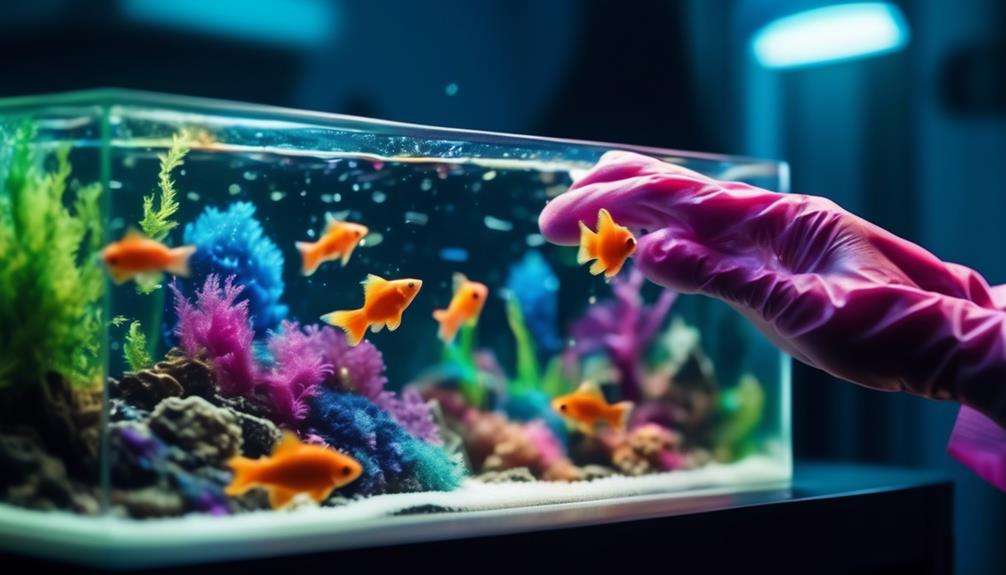
To ensure a thorough sanitization process, it is essential to properly disinfect all accessories and decorations that are removed from the fish tank. Cleaning agents such as a mild bleach solution or a commercial aquarium disinfectant can be used to effectively eliminate harmful bacteria or parasites. It is important to rinse the accessories and decorations thoroughly with clean water to remove any residue before allowing them to dry completely. Regularly cleaning and disinfecting these items can prevent the buildup of harmful microorganisms and maintain a healthy tank environment.
| Cleaning Agents | Tips for Prevention |
|---|---|
| Mild bleach solution | Remove accessories and decorations from the tank before sanitization |
| Commercial aquarium disinfectant | Clean them separately using the chosen cleaning agent |
| Rinse thoroughly with clean water | |
| Allow them to dry completely before placing them back in the tank | |
| Regularly clean and disinfect accessories to prevent the buildup of harmful bacteria or parasites |
Frequently Asked Questions
How Often Should a Fish Tank Be Sanitized?
A fish tank should be sanitized regularly to ensure a disease-free environment. The frequency of sanitization depends on factors such as the number of fish, the size of the tank, and the cleanliness of the water.
Can I Use Soap or Detergent to Clean the Fish Tank?
Using soap or detergent to clean a fish tank can be harmful to the fish and should be avoided. These substances can leave behind residue that is toxic to the fish and disrupt the delicate balance of the tank's ecosystem.
Is It Necessary to Remove All the Fish From the Tank During Sanitization?
During fish tank sanitization, it is necessary to remove all the fish from the tank. This ensures their safety and prevents the spread of disease. Proper cleaning methods should be followed to maintain a disease-free environment.
Can I Use Household Cleaning Products to Disinfect the Accessories and Decorations?
Using household cleaning products for fish tank disinfection is not recommended. Instead, opt for mild bleach solutions or commercial aquarium disinfectants. Rinse accessories and decorations thoroughly with clean water before allowing them to dry completely.
How Long Should I Wait Before Reintroducing the Fish Into the Sanitized Tank?
It is crucial to wait until the fish tank is completely sanitized and the water parameters are stable before reintroducing the fish. This ensures their health and reduces the risk of reinfection. The recommended timeframe may vary depending on the specific situation and the type of disease.






